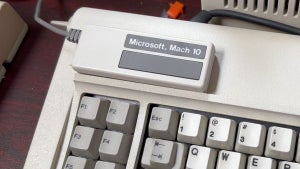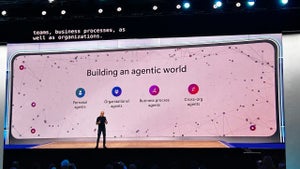EternalBlue Exploit: What Is It, and Is It Still a Threat?

- April 3, 2025
- Updated: July 25, 2025 at 10:58 AM

In April 2017, the hacker group known as The Shadow Brokers leaked a set of hacking tools that had reportedly been developed by the U.S. National Security Agency (NSA). Among those tools was the EternalBlue exploit, considered by many to be one of the most enduring and damaging exploits in the history of cybersecurity.
EternalBlue is an exploit created by the NSA that targets a vulnerability in the Server Message Block version 1 (SMBv1) protocol in Microsoft Windows. This vulnerability, identified as CVE-2017-0144, allows attackers to remotely execute code on affected systems, enabling malware to spread without user interaction. Its appearance led major cybersecurity companies, such as AVG, to develop updated firewalls and advanced detection systems to protect their customers.
Origin and Leak of the Exploit
In April 2017, The Shadow Brokers leaked an array of advanced cyberattack tools allegedly developed by the NSA, including EternalBlue. This disclosure exposed sophisticated hacking resources to the public, heightening the risk of large-scale cyberattacks.
How EternalBlue Works
EternalBlue, also known as MS17-010, exploits a vulnerability in Microsoft’s SMBv1 network file-sharing protocol. Server Message Block version 1 allows computers to share files, printers, and other devices on a Windows network.
However, SMBv1 contains flaws that allow attackers to send malicious data packets to the network. Once inside, malware can spread to all the devices on the network and beyond. Despite Microsoft’s attempts to patch the vulnerability and protect users, hackers used this exploit to launch some of the most significant cyberattacks in history. Today, most Microsoft devices are protected against EternalBlue, but many remain at risk.
Global Impact: The Case of WannaCry
One month after the leak—in May 2017—the WannaCry ransomware exploited the EternalBlue vulnerability to infect more than 230,000 systems across 150 countries. This attack affected organizations ranging from hospitals to multinational corporations, causing significant economic losses and underscoring the importance of keeping systems up to date.
How Did Microsoft Respond?
Before the leak, in March 2017, Microsoft released the MS17-010 security patch to fix the vulnerability exploited by EternalBlue. However, many systems were not updated in time, facilitating the spread of attacks like WannaCry.
Following the attack, Microsoft took the unusual step of releasing patches for older operating systems, no longer officially supported, including Windows XP (released in 2001) and Windows Server 2003 (released in 2003). This helped mitigate the exploit’s impact.

Steps to Avoid Becoming a Victim of EternalBlue
- Update Your Operating System and Apply Security Patches Microsoft released the MS17-010 security patch in March 2017, which fixes the vulnerability exploited by EternalBlue. If you still use older Windows versions like Windows XP, Server 2003, or Windows 7, make sure you install available security updates or switch to a more recent version. Enable automatic updates so your system always has the latest security patches.
- Disable SMBv1 EternalBlue exploits a flaw in the Server Message Block version 1 (SMBv1) protocol, which is outdated and insecure. Disable SMBv1 and use safer versions like SMBv2 or SMBv3. On Windows 10 and more recent Windows Server editions, SMBv1 is disabled by default.
- Use a Firewall and Restrict Access to Vulnerable Ports Block port 445 (SMB) on your firewall if it’s not needed on your network. Configure rules so SMB traffic is limited only to trusted internal devices.
- Use an Updated Antivirus and an Intrusion Detection/Prevention System (IDS/IPS) Reliable security software can detect and block EternalBlue exploitation attempts. Tools like AVG Antivirus Free have signatures that can identify this exploit. In corporate networks, use IDS/IPS to monitor suspicious traffic.
- Regularly Back Up Your Data EternalBlue has been used to spread ransomware such as WannaCry and NotPetya. Keep offline backups and cloud backups to recover your files if you fall victim to an attack.
- Avoid Outdated Software and Unsafe Remote Connections Don’t use old Windows versions without current support, like XP or Server 2003. Use secure VPN connections instead of exposing remote-access ports directly to the internet.
By following these guidelines, you can minimize the risk of EternalBlue and similar attacks. Naturally, we also recommend installing top-tier antivirus solutions—whether free or paid—such as AVG AntiVirus Free to safeguard your devices.
Journalist specialized in technology, entertainment and video games. Writing about what I'm passionate about (gadgets, games and movies) allows me to stay sane and wake up with a smile on my face when the alarm clock goes off. PS: this is not true 100% of the time.
Latest from Chema Carvajal Sarabia
You may also like
 News
NewsBeyond Photography: 5 Types of Adobe Stock Assets That Will Elevate Your Content
Read more
 News
NewsThe submarine cables that provide internet to the world foresee a record investment for 2027
Read more
 News
NewsThe worst product in Microsoft's history: it sold 11 units and 8 were returned
Read more
 News
NewsMicrosoft wants to launch new AI agents that could change everything in your company
Read more
 News
NewsOscar Isaac is willing to return to Disney, but with a very clear condition
Read more
 News
NewsEverything you need to know about Sony's State of Play dedicated to Japanese and Asian games tonight
Read more